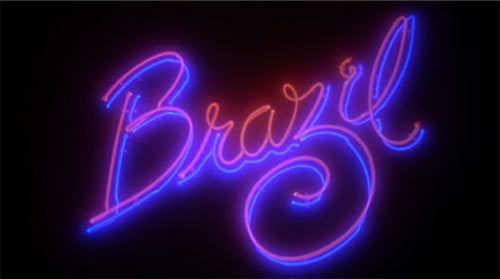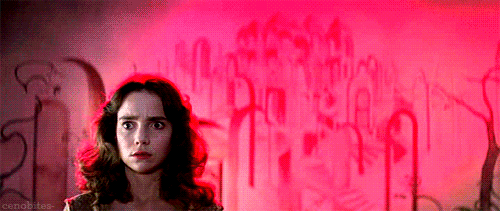- 8 1/2 (1963) - Federico Fellini
- if... (1968) - Lindsay Anderson
- Mulholland Dr. (2001) - David Lynch
- Belle de Jour (1968) - Luis Bunuel
- Kuroneko (1968) - Kaneto Shindo
- El Topo (1970) - Alejandro Jodorowsky
- 2001: A Space Odyssey (1968) - Stanley Kubrick
- La Haine (1995) - Mathieu Kassovitz
- Pierrot le Fou (1965) - Jean-Luc Godard
- Holy Motors (2012) - Leos Carax
Stylized cinema was first brought to the world by the introduction of German Expressionism, a type of cinema that could not seen to be realistic, even in a theatrical sense, yet still carried a message that could be applied to a real situation. Since then many films have been produced that could be labled as stylized due to this, and many directors have specialized in the making of these unconventional films. This is a list of what I believe to be the top ten films that are either filmed or told in a stylized manner. At number ten is Leos Carax's Holy Motors, a film which was up for consideration for the Palme d'Or in 2012, this film is episodic - yet with a single lead character making the surrealism of the entire film seem to be guided, this guide is a driver who embarks on a journey across Paris. Holy Motors finds itself at number ten due to the intelligence behind it's style, and the almost familiarity the chapters of the film bring due to the recurring lead.
At number nine is Jean-Luc Godard's Pierrot le Fou, a film which brings such simplicity to it's style, however still allows it to have an impact on the film. This is a film which, at times is post modern, and at others can consist of long takes to draw out simple events. The film tells the tale of a married man who elopes with a young woman, the nanny of his children, only to go on the run across France. The film sits at number nine for the captivating story, which could be interpreted as a stylized portrayal of a man's mid-life crisis.
La Haine is positioned at number eight in this list, this is due to the subtle style of the film, a style which flares during the film's climax increasing it's impact. Director Mathieu Kassovitz manages to manipulate the style to create a film which is both visually interesting yet no imposing on convention. The film is set over the course of 24 hours, and is centered around three friends in a run down area in Paris who find a gun after a riot. The film's highly tense plot is enhanced by our constant reminder of the time, teasing us that we are counting down to a climax where the whole of Paris could explode, and when this climax arrives Kassovitz's style blooms into the spectacular. This film is ranked at number eight due to the intelligent management of the style.
Stanley Kubrick's 2001: A Space Odyssey sits at number seven, a film that was clearly meticulously planned out by its masterful director. An almost completely symmetrical film, this is clearly Stanley Kubrick's most stylized film - both through the score and through the attention to detail on Kubrick's part, for example the consistent use of one point focus shots throughout the film, especially during scenes in which the monolith appears. This films sits at number seven on this list for both the commercial success it gained despite being so stylized, and also for the beautiful mise-en-scene orchestrated by Stanley Kubrick.
The next film on the list is the cult classic El Topo directed by none other than the infamous Alejandro Jodorowsky. The film is about a gunslinger who must travel across the desert to defeat four zen masters, as to win the heart of a woman. But the film is also much more than this, it was the starting point for many surrealist and psychedelic filmmakers to come, the film has been cited as an influence by many famous directors - most notably David Lynch. This is due to many of the themes of the film, which is harshly graphic, and due to its apparent lack of regard for its style, the film seems to be completely unaware of the fact that is unique, this not only increases the surrealism, but also draws the spectator in.
This explicit underground western is ranked at six on this list for its impact on stylized films for years to come, and its wonderful exploitation of the reclined censorship of the time.
At number five on the list is the overlooked Gothic classic - Kuroneko made by Japanese director Kaneto Shindo. The film tells the story of two women who are raped and murdered by samurai, who then return as ghosts to brutally kill and suck the blood of passing samurai. The film's ritualistic motifs and use of lighting make the gruesome tale all the more horrific, with it's eerie score adding to the horror due to it's contrasting unpredictability. The lighting in the film is particularly effective during the scene in which Yone is confronted by her son at the Rago Gate. In this scene Yone's bright white looks ghost-like against the black background, as does her son - suggesting he is the ghost of his former self. This film climbs above some of the classic stylized films due to it's masterful use of genre convention within the use of a strongly present style.
Luis Bunuel's Belle de Jour is a film present in almost all lists concerning stylized or surreal cinema due to not only the use of his brilliant surreal style to convey a strange suburban fantasy, but also the way in which he uses the film to analyse the sexual psychology of the unfulfilled married woman of the time. The story of the film tells of a woman whose husband cannot fulfill her sexual desires, and so during the day whilst he works becomes an escort. Bunuel's brilliant dream sequences manage to distance the film outside of convention, yet his script allows for a relation between the spectator and Severine/Belle, concerning an unfulfilled desire. The film represents that in a modern society it is outside of convention to gain one's deepest desires, in this case it refers to sexual desires however the film's representation suggests so much more, this is why the film is at number four on this list.
Possibly the greatest surrealist film in the past twenty years, David Lynch's Mulholland Dr. has both a brilliant and strong style, as well as an amazing story which revolves around a car crash in which a woman loses her memory, she stumbles into the care of an aspiring actress who has just arrived in the city, and from then on it all goes downhill. The film which contains many references to Billy Wilder's classic Sunset Blvd. (and could be taken as a homage to the film), it also has a wide range of strange characters, adding to the surrealism. Lynch's style is very much present throughout this film, however is not overbearing, and the way in which he manages this style, particularly during the transition between the first and second half of the film, is truly skillful. This film gains the number three spot in this list due to the masterful referencing throughout the film in an intelligent and meaningful manner, and also the control Lynch has over his style throughout the film.
Second on this list comes Lindsay Anderson's if..., a film which is seen as a classic among certain circles. The film is about a rebellion held by some of the more troublesome boys in a private school in England. The film stars Malcolm McDowell in the role of Travis who is the ringleader of this group, and delivers what I consider to be the finest role of his career - due to his almost embodiment of the role, and the way in which he makes the stylized nature of the film seem non-existent. The film's strong style creates a brilliant critique of England at the time, and of the private school system that was in place there. The film is shot at the boarding school in which Lindsay Anderson was enrolled, giving the film a much more personal and spiteful nature, this is also conveyed through Malcolm McDowell's outstanding acting. This film is placed as the second greatest stylized film as it's style is clear yet non-imposing, and the acting from Malcolm McDowell allows us to feel as though although the film is surreal, it does echo normality quite powerfully.
Finally, at the top of the list is a film which is considered to be the greatest film ever made by many acclaimed directors, and in fact comes fourth in the BFI directors poll of the top 100 greatest films of all time. This is Federico Fellini's 8 1/2, a film which as though it were a metronome flows through dream and reality, almost molding the two together. The film concentrates on Guido whom is a director that does not understand what his film concerns. The film gave Fellini a platform to show the trials and tribulations of being a director, as well as the social complications it can bring. The confusion that is felt by Guido throughout the film is brought to us by Fellini, as he makes the transitions between the dreamworld and reality seamless. Therefore Fellini's masterpiece is at the top of this list as it has inspired many of the great works by other auteurs, and for his unique storytelling ability.
__________________
p e a c e a n d l o v e : - )
p e a c e a n d l o v e : - )
Last edited by the-young-turk; 09-18-14 at 08:53 PM.


